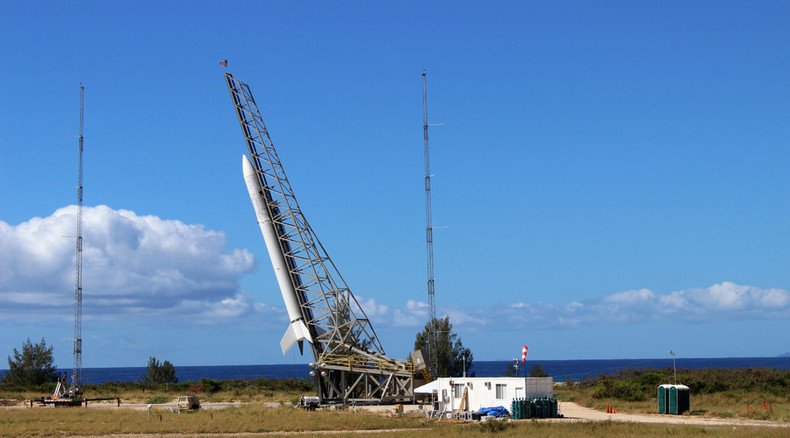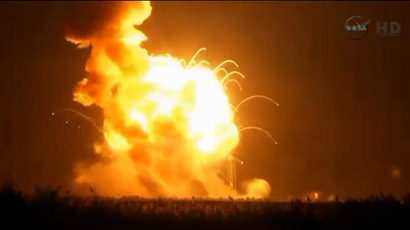'Super Strypi' rocket disintegrates 1 minute after launch

The US Air Force has confirmed that its 'Super Strypi' sounding, or research, rocket has broken up on launch as its booster gained excessive rotation, destroying the vehicle a minute after lift-off.
“The ORS-4 mission on an experimental Super Strypi launch vehicle failed in mid-flight shortly after liftoff at 5:45 p.m.,” the US Air Force said in a statement.
The Super Strypi launch suffered a failure around a minute into first stage flight in Hawaii https://t.co/XWMRc0Pp9Cpic.twitter.com/M8PzRkj6B4
— Astropular (@Astropular) November 4, 2015The launch was carried out from the Pacific Missile Range Facility on the Hawaiian island of Kauai late Tuesday, November 3.
The launch of a modified, three-stage Strypi rocket has been postponed several times over the last two years, since October 2013, due to technical problems.
According to Spaceflightnow.com, the nearly 17-meter-long rocket with a diameter of 79 centimeters was launched as part of an experimental test flight of a new military lightweight satellite booster, supposed to deliver to lower orbit a HiakaSat satellite and 12 or more nano satellites.
Confirmed - Debut Launch of Super Strypi Rocket fails during First Stage Flight -- https://t.co/dcsXmPSrKRpic.twitter.com/k3pzOLelra
— Spaceflight101 (@Spaceflight101) November 4, 2015The Super Strypi, also known as the Spaceborne Payloads Assist Rocket Kauai (SPARK), is supposed to operate as a launch platform for the Low Earth Orbiting Nanosatellite Integrated Defense Autonomous System (LEONIDAS) program, called to provide the US Department of Defense with a low-cost system to deliver small payloads into orbit.
The mission of the modified Strypi booster was sponsored by the Air Force's Operationally Responsive Space Office, in cooperation with Aerojet Rocketdyne, Sandia National Laboratories, the Pacific Missile Range Facility and the University of Hawaii.
Originally two-stage, the Strypi rocket was first tested in the early 1960s and retired in 1998, when the last official launch was performed on April 17. Altogether, there have been five unsuccessful launches over 50 years, with the previous failure taking place in 1995.
The Strypi family rockets have being used as targets for testing anti-missile systems and also as research rockets.













